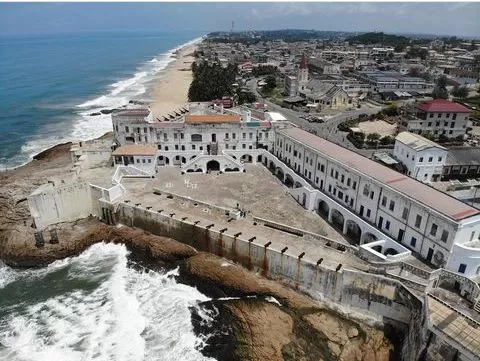It was a down-heartening and an emotional moment at the Cape Coast Castle in Ghana, when we visited the famous and one of the largest slave castles and witnessed evidences of the activities that occurred in there during the Trans-Atlantic slave trade.
History of the Cape Coast Castle
The Cape Coast Castle is one of the well-known and largest commercial forts out of the forty (40) forts built in the Gold Coast, now Ghana. The Cape Coast castle in Ghana was built by the Europeans during the trans-Atlantic slave trade in the then Gold Coast.
The castle was built in 1555 by the Portuguese to facilitate their trade or serve as a trade post. Since it was built at the high point of the land which narrowly extends into the sea, the castle was named ‘’Cabo Corso’’in Portuguese which means a short cape. Around 1653, the Swedish also constructed their fort there to commence their timber business.
The fort was then transferred to the Danes after merchants from Amsterdam funded them to conquer the Swedish in 1657. Two years on, the Dutch took over the fort after they convinced the leader of the fort that the Dutch has conquered the Danish. However, possession of the fort proved futile since the then chief of the Fetu land was displeased with the Dutch taking over.
The Cape Coast Castle was taken over became successful after the death of the chief making it a property of the Dutch. Around 1664, the English also conquered the Dutch and captured the fort and named it Cape Coast Castle making it the capital of the Gold Coast for the English possessions.
In the 17th century, the fort was rebuilt and increased in the size, shape and wall after the French had attempted to capture the castle from the English causing damages to part of the building. The castle became a two story building to serve as apartment of the British governor while beneath it is a Slave dungeon.
The trade of gold, timber, and other resources ended up in the Trans-Atlantic Slave Trade selling and transporting slaves to America especially the Carribean islands. The slave dungeon in the Cape Coast Castle was an underground dungeon full of darkness, massacre, inhumane and death.
The dungeon tunnels to the bank of the sea where ship awaits the slaves to be shipped off across the Atlantic. As the Europeans lived in luxury in the Cape Coast castle, the slaves were in the dungeon doing everything in chains.
The ‘’Door of no return’’ is a door in the Cape Coast castle. Over there, is the exit where the final embarkation of transport of slaves from the castles to America happened. The slaves were transported through this door for shipping as the ship awaits on the Atlantic ocean.
During this period, millions of slaves were transported to the Caribbean, South America, and the U.S whereas some also died along the line. While transporting the slaves, those who proved recalcitrant and resisted the orders from the governors were beating and killed.
Check out some photos depicting activities in the Cape Coast castle during the Trans-Atlantic Slave Trade.
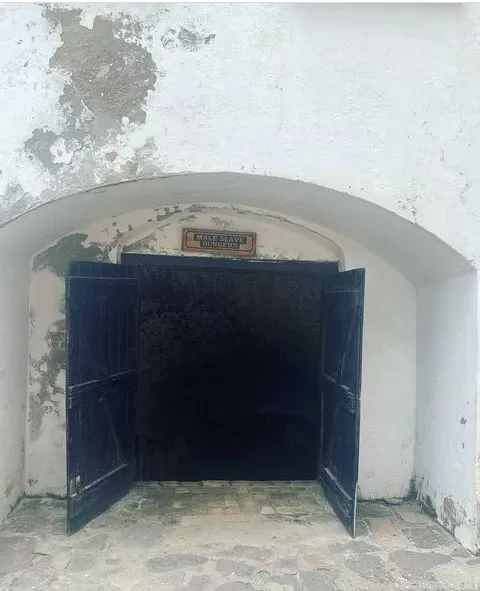
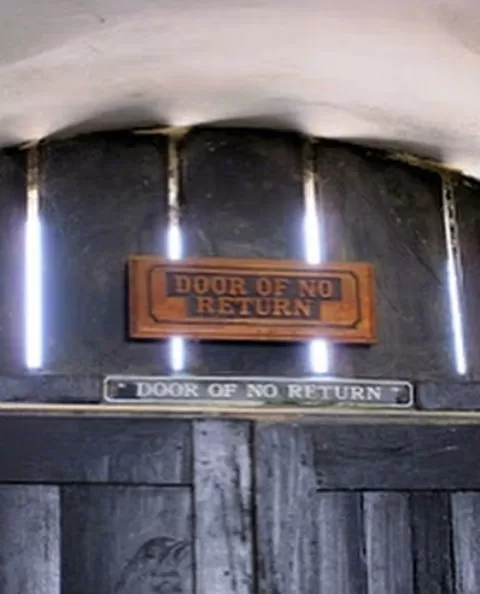
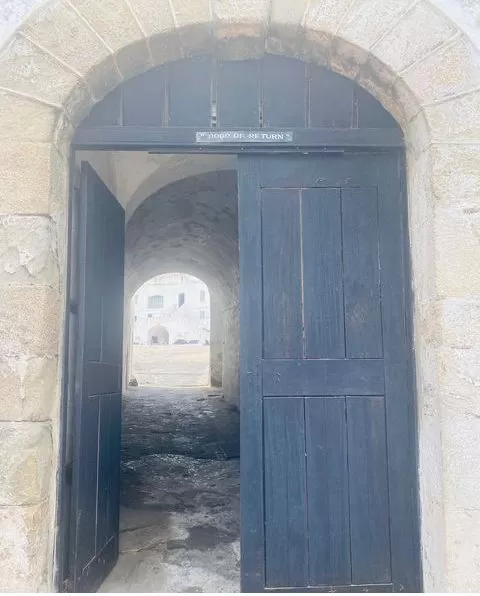
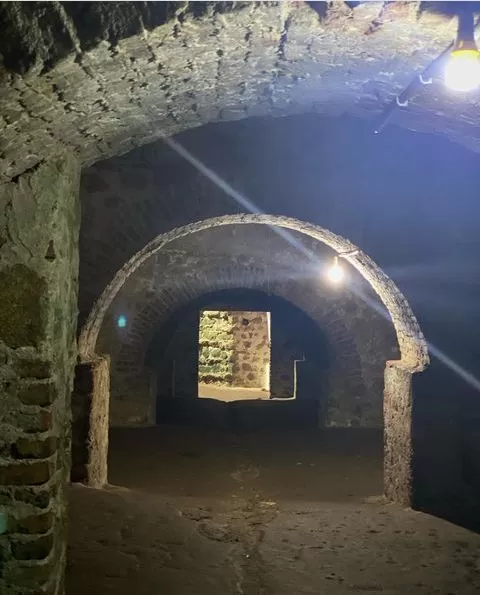
Location of the Cape Coast Castle in Ghana
The Cape Coast Castle is located in Cape Coast, along the coastal town in the Central region of Ghana. Cape Coast is about 2 and half hour drive and 148 km away from Accra and close to the Elmina Castle. The transport fare from Accra to the Cape Coast castle is comparatively small cost depending on the type of transport system one is using.
Entrance fee
The cost of entry into the Cape Coast castle can be categorized into: Ghanaians and Non-Ghanaians.
Ghanaians:
- Adults Ghc.5.00
- Students- Ghc.3.00
- Children- Ghc.1.00
Non-Ghanaians:
- Adults- $7.00
- Students- $5.00
- Children- $1.00
Time To Visit
The Cape Coast castle opens daily between the hours of 08:00am to 05:00pm.
Nearby Attractions
Elmina Castle, Kakum Canopy walkway, Fort Nasau, Pan African Heritage World, Monkey Forest, Fort William.
The Cape Coast castle is currently serving as a museum after Ghana had its independence from the British and now protected by UNESCO World Heritage list. The Cape Coast castle now serving as a tourist attraction in Ghana has been visited and remains the center of attraction for most tourists who visit Ghana.
Thank you for making adagya.com your best travel and lifestyle blog in Ghana.
Kindly follow our social media handles and lets get interactive. We are accepting guest posting so kindly send us your content for publishing.
Related article
Indonesia For Tourism: Best 21 Tourist Attractions You Should Visit
How To Enjoy Vacation In Accra, Ghana
12 Best Beaches In Ghana To Visit
25 Best Festivals In Ghana To Witness

